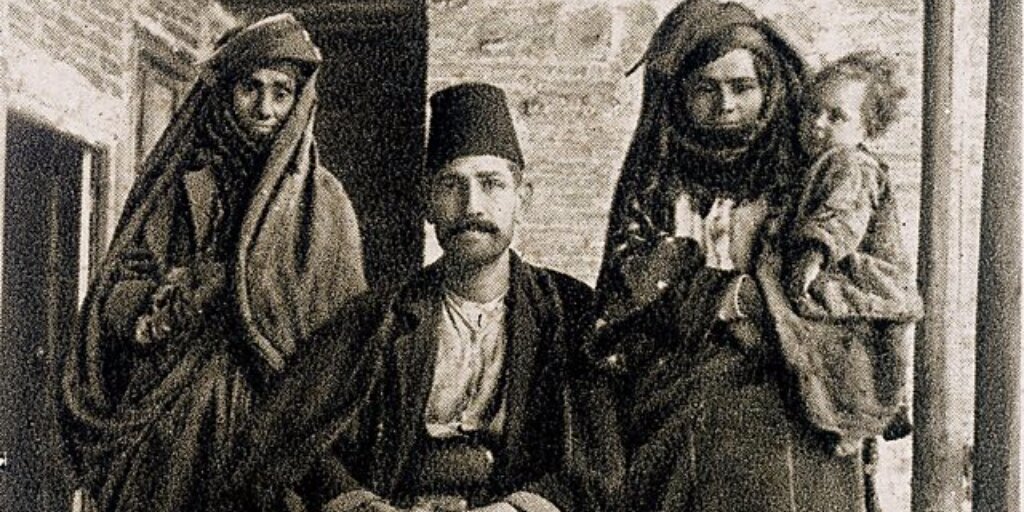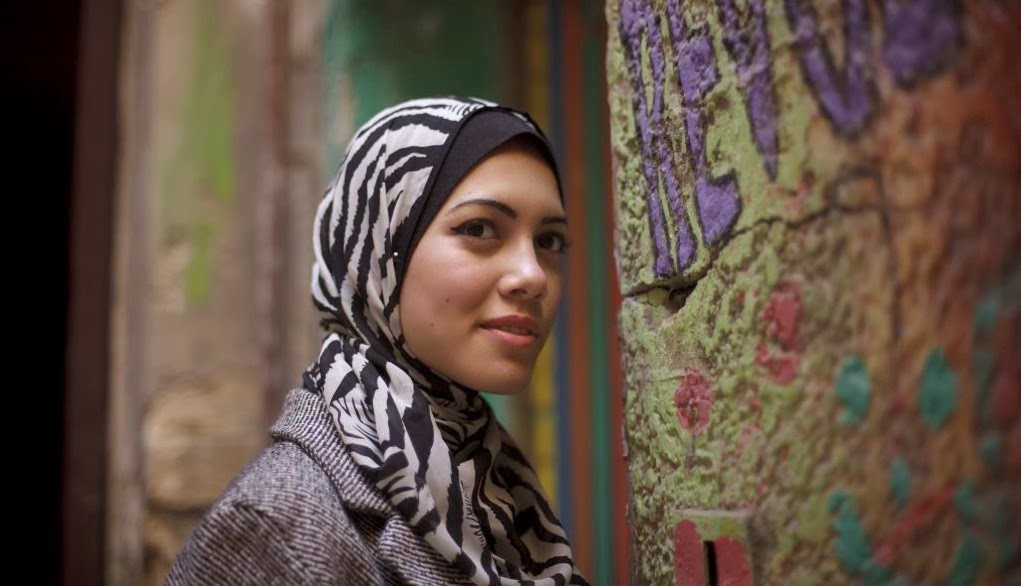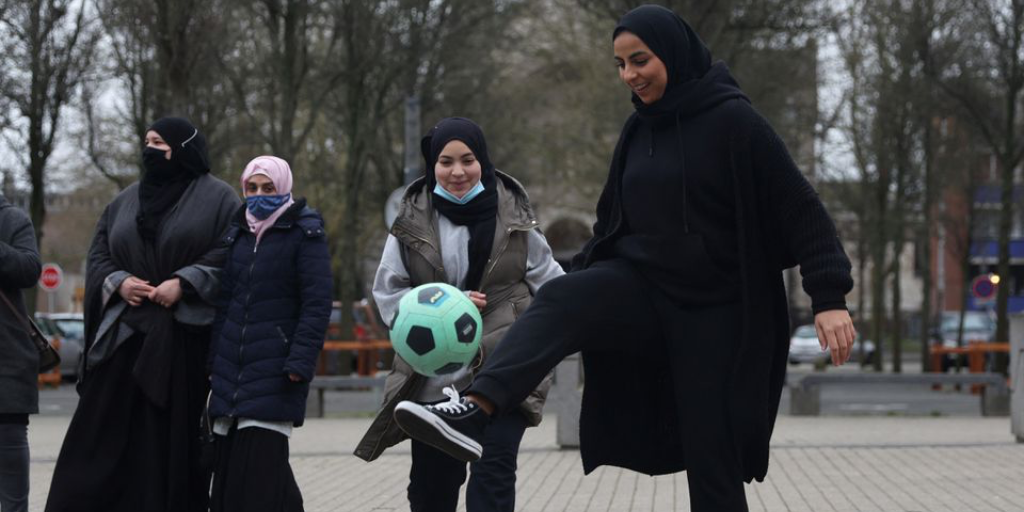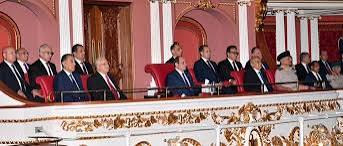The conversation surrounding the veil has made headlines in recent years as a topic mired in controversy. In Western media, the veil has become synonymous with oppression, tyranny, and the lack of freedom imposed on women by men. The practice has become politicised in a race to regulate women’s bodies in a pull-and-tug between those imposing it, and those banning it – when ultimately, it is a woman who dons it.
However, throughout history, the veil has held different meanings and symbolism depending on the culture and the time period; it has represented status, culture, fashion and religious ideologies.
While the veil, today, is predominantly associated with Islam, wearing one is a practice that predates the monotheistic religion.
A Brief History
For women, the custom of donning a piece of cloth over their heads can be traced back to one of the oldest civilizations in the world, Mesopotamia. The earliest mention of the veil was found in a legal text dating back to the Assyrian Empire (modern-day Iraq, and parts of Syria, Kuwait, Turkey and Iran) — part of Mesopotamia — in 13th century B.C.
Mesopotamian women from the upper echelons of society wore a veil as an emblem of respect, and to assert their status in society.
The donning of the veil can also be found in ancient Greece, with statuettes dating to that period portraying women bearing the drapes of a himation over their heads, bodies, and sometimes parts of their face. In some cases, it was believed that the veil was worn to help women hold their hair together.
A number of researchers stipulate that the veil in ancient Greece was used as an instrument to grant women the freedom of movement in the public sphere. However, there are also arguments that it was seen as a form of oppression.

When it comes to Judaism, Christianity, and Islam, the veil was adopted as a means to show modesty and propriety. In Judaism, the veil is mentioned as a means to differentiate between married and unmarried women as well as between “torah-observant” women and non-observant women. There are three ways to wear the veil in judaism: as a full head-covering with some women shaving their heads to ensure that no strands protrude; as a headscarf (tikhl); or as a wig (sheytl). In Christianity, women were required to wear the veil as per a letter by apostle Paul — an influential figure in early Christianity — addressed to the Corinthians. It is still practised within some conservative Catholic communities, and radical branches of Christianity within Protestantism.
The Veil in Modern Egyptian History
By the early 1900s, across the Middle East, questions over a woman’s place in society began sparking conversations among intellects. A woman’s role within the public sphere as well as her level of education — or lack thereof — became the litmus test measuring society’s progress and modernity.
In the 19th century, Egyptian jurist and philosopher, Qasim Amin, argued that the veil impeded a woman’s trajectory towards emancipation. A woman’s education was indirectly linked to her wearing the veil, and as such was taken into consideration when discussing her liberation. Unveiling became a part of the suggested social reforms in the dialogue surrounding women’s rights.
The eras to come in Egypt witnessed the trend of unveiling – particularly within the upper and middle classes – against the backdrop of contemporaneous political, social, and cultural shifts.
The veil, as a symbol of religion and not tradition, began to gain growing popularity again in Egypt by the 1970s, after the country’s 1967 defeat by Israel. With many Egyptians reeling from Israel’s victory — and losing faith in the political system at the time — Arab nationalism was replaced by a rising Islamic movement. Coupled, in 1973, with the signing of the Camp David Accords, many Muslims felt deceived by what they perceived as a betrayal. And for women, that translated into a return to the veil, especially among the lower and middle socio-economic classes.
However, those were not the only drivers behind the wave of veiling that proliferated in the country, as Wahhabism — an austere fundamentalist religious movement — was imported into Egypt with Egyptian migrants coming back home from Saudi Arabia in 1974.
Studies examining periods of veiling and unveiling in history have found a connection between the practice and the way in which politics were unfolding at the time. In many instances, women choose to wear the veil as a means of self-expression in their rejection to political systems.
Speaking of more recent examples of the veil, contemporary Egyptian economist, commentator, and writer, Galal Amin stipulated —in his 2002 book, ‘Asr El Gamaheer Al Ghafeera’ (The Age of the Great Masses) — that the veil evolved in Egypt throughout the years, from being a religious symbol to being a tool for a woman’s emancipation.

As dynamics within the Egyptian family structure shifted, so too, did the role of the woman within the household. Men were no longer the sole breadwinners. As such, wearing the veil for women hailing from conservative backgrounds, translated into a means to gain an active role in the public sphere through employment. That in turn, gave women from a certain income level financial independence.
By the 2000s, the discourse shifted once more, with the veil being viewed as an indicator of a woman’s socio-economic class. By the mid-2000s, several well-reputed establishments – including hotels and restaurants – received backlash for restricting veiled women from entering their venues. This sparked several online movements throughout the years, with women calling out venues and affluent neighbourhoods for being discriminatory against veiled women.
The Veil as a Symbol of Freedom
Modern history, all the way to the present day, is replete with examples of women using the headscarf as a tool for resistance, and to assert independence.
In the 1950s, under colonial French rule, women in Algeria wore the veil as a statement of their resistance against their colonisers. During that period, public unveilings initiated by the French took place in an effort to spread European values within the country, and liberate the women. Algerian women, however, counteracted this by continuing to wear the veil as an assertion of their identity and a refusal to renege their independence to a foreign power. With the liberation of Algeria, which came in 1962, many women within the country then decided to unveil.
Martinique-born, French Psychiatrist Frantz Fanon, who adopted an anti-colonial stance, said of the colonisation in Algeria: “If we want to destroy the structure of Algerian society, its capacity for resistance, we must first of all conquer the women.”
Fanon stipulated that in controlling women’s bodies, the colonisers would succeed in controlling Algeria. Women were symbolic of the state of their country.
In the 21st century, wearing of the veil, most notably associated with Islam, has incited controversy globally with the practice being politicised.
Today, a number of European cultures actively resist the hijab. Various States in Germany have imposed a ban on the veil for teachers, while in the state of Hessen, it extends to civil servants as well.
In 2004, public schools in France banned the veil.
In 2021, as part of the proposed “anti-separatism bill”, the French senate passed an amendment that prohibits girls below age 18 in France from wearing the veil. Along with the aforementioned amendment were a number of suggested revisions including forbidding veiled mothers from accompanying their kids on school trips.
The reaction sparked by Europe’s stance towards the veil mimicked that of the Algerian revolutionaries, with Muslim women taking to social media to voice their dissent. The hashtag accompanying the public outcry, #HandsOffMyHijab went viral at the time, with women using the headscarf as a metaphor to proclaim their autonomy over their own bodies.
Similarly, In 2017, British-Sudanese poet and basketball player Asma Badawi made headlines when she managed to reverse the ban on the veil placed by the International Basketball Federation (FIBA).
History is peppered with examples of the likes of Badawi who exemplify women’s continuous struggle to retain ownership over their own bodies; be it by wearing the veil or removing it.
A report released by Amnesty International in 2011, postulates that under international law, interfering with the way a person chooses to express their culture, identity or religious leanings is a breach of their freedom of expression. This extends to governments, family members, and religious entities who coerce or force women to veil.
What a woman chooses to wear, or not to wear, is entirely up to her and falls within the jurisdiction of freedom of expression.
Moreover, it was found that the implementation of dress codes in a country tends to impact women more than it does men: as states and other entities attempt to regulate the way in which women dress in a bid to mirror a society’s values.
While there are indeed instances where the veil has been wielded as a tool for oppression, being forced on women, there are likewise instances where women have been discriminated against for choosing to wear it as an emblem of their identity, religion, and culture.
The restrictions imposed on women in their choice of attire — regardless of whether conservative or liberal — promotes gender inequality as these rules interfere with women’s agency over their own bodies.
The discourse surrounding the veil, be it to remove it or wear it, has, throughout modern history, involved the intervention of third parties with women fighting back in both cases to assert their autonomy over their body.







Comment (1)
[…] with the country’s rich musical life until the 1970s, a period which marked an important turning point for Egyptians Muslims’ relationship to their […]